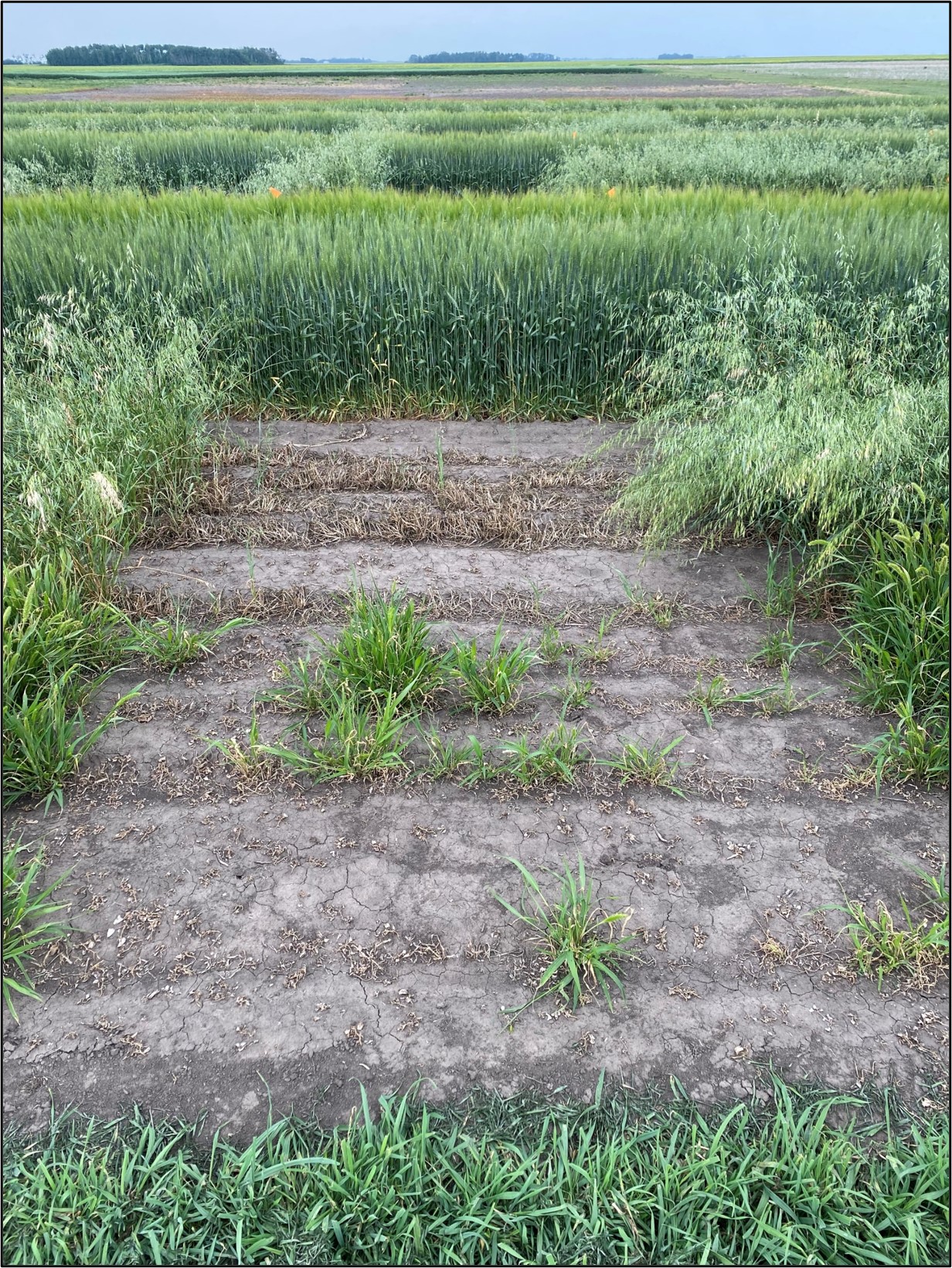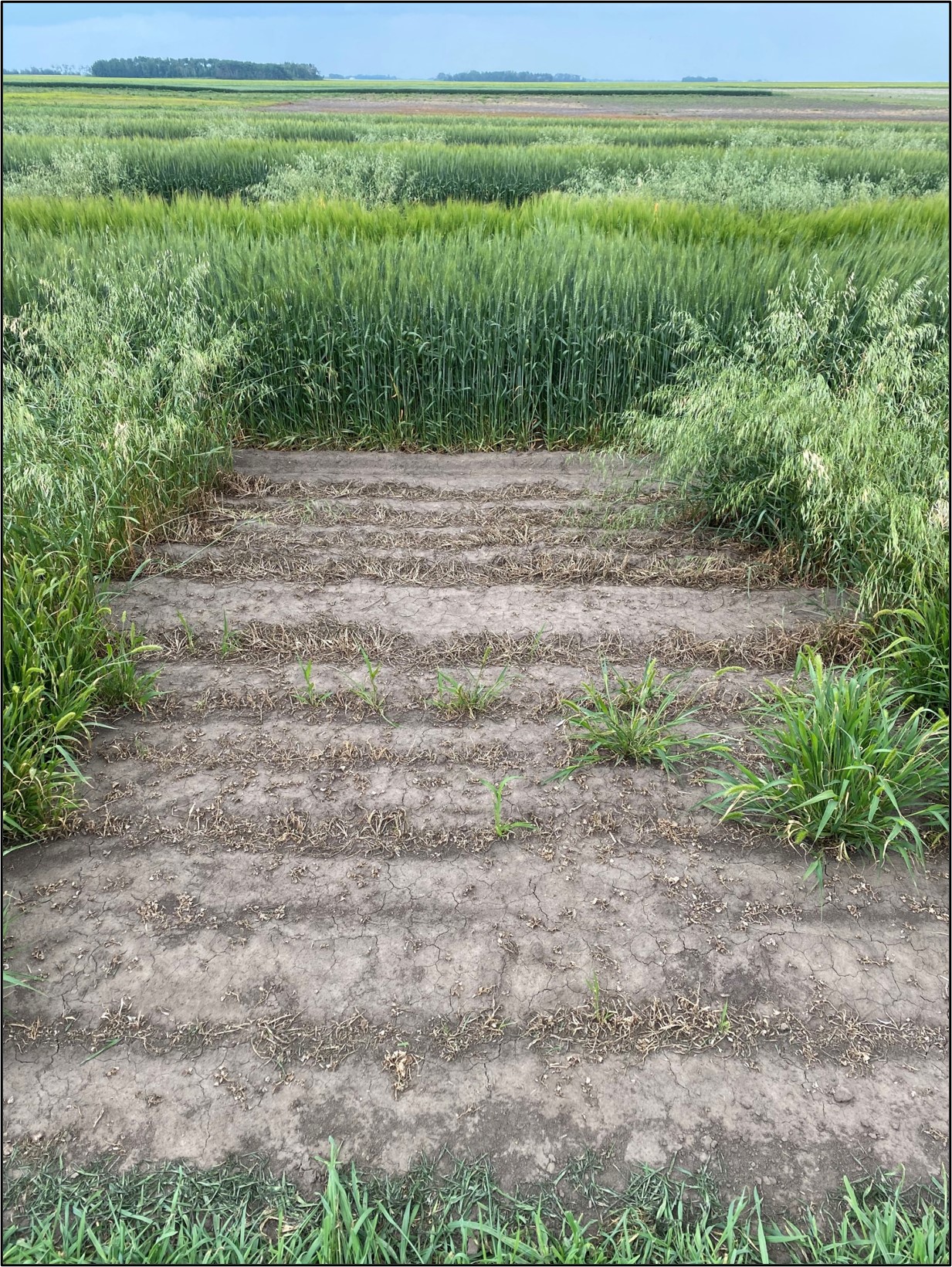The ten most prevalent weed species in Western Canada have held consistent spots since the 1970’s — two of which are top-of-mind for wheat and barley growers1.
“Wild oats and green foxtail are very adaptable weed species that can be challenging competitors for cereal crops, especially in the drier conditions we’ve seen these last few seasons. Green foxtail, particularly, can steal up to 25 per cent of a wheat crop yield2,” says Ken Saretzky, a Market Development Agronomist with Bayer.
This leaves many growers asking how they can best manage wild oat resistance and mounting green foxtail pressure. The key to this challenge lies with knowing what pressures exist within your acres, so you can implement an effective integrated herbicide management strategy.
“Before choosing a grass herbicide, growers should always identify potential resistance concerns,” Saretzky says. “If you have or suspect Group 1-resistant wild oats on your acres, Group 1 herbicides will not set your field up for success. That said, if you’re seeing Group 2-resistant grassy weeds, then they will be a good fit.”
Not all grass herbicides are created equal; some active ingredients are more effective on certain grass species than others. Using a single grass active to manage broad grass populations can lead to some species slipping through the cracks. An increasingly common strategy to maximize the strength of actives is combination. By combining multiple actives into a single product, you can maintain an effective control level while tackling the most troublesome grassy weeds.
In the Prairies, Saretzky observed an increase in green foxtail pressures across drought-stricken areas in his region as well as continuing wild oat challenges.
For growers looking to fight back against grassy weeds in their spring wheat and barley acres, Saretzky recommends considering Cirray™ as a Group 1 herbicide option for effective control for wild oat as well as green and yellow foxtail populations.
Cirray Performance vs. Pinoxaden Commercial Standard
Wild Oat, Green Foxtail, & Yellow Foxtail Species – 42 Days After Treatment

Untreated Check

Generic (Brazen™ || Herbicide)
(pinoxaden @ 60 g ai ha)

Axial® Herbicide
(pinoxaden @ 60 g ai ha)

Cirray
(pinoxaden + fenoxaprop @ 40 + 40 g ai ha)
Source: Bayer Internal Trial in Rosthern, SK. Imagery captured 42 days after treatment. Wild oats application at 2-tiller stage.
Your results may vary according to agronomic, environmental and disease pressure variables.
“Cirray is a considerable step up from other pinoxaden competitors on the market with green and yellow foxtail control, especially on barley. It’s also comparable to other pinoxaden market leaders in terms of wild oat control. I recommend it often because, quite frankly, it stands up very well to the pressures we’re seeing in field.”
Since registration in late 2021, Cirray has played a key role in combatting these grassy weeds. With an emulsifiable concentrate (EC) formulation using two Group 1 actives, Cirray is also an excellent choice for growers concerned about Group 2-resistant wild oats.
The formulation brings together two powerful grass molecules, one with strength in wild oats and the other leading on green and yellow foxtail populations. The combination of these two actives effectively enhances the grass spectrum compared to other straight pinoxaden competitors on both green foxtail and wild oats. Growers no longer have to give up green and yellow foxtail activity in order to manage advancing wild oat populations.
Saretzky says that controlling grassy weeds is a team effort that involves finding the right herbicide for your cereal acres, pairing it with a strong broadleaf tank-mix partner that can solve the challenges faced on each field, and applying it at the right time and in the right way to maximize the product’s efficacy.
Maximizing Impact with Cirray
Cirray is available in 20-acre jugs or 320-acre bulk drums, providing growers flexibility with no re-cropping restrictions the following year. There are many broadleaf tank-mix options to consider, including Infinity® FX and Buctril® M.
According to Saretzky, “It’s important to choose a broadleaf tank-mix partner early because it will impact when you can spray. For example, while Cirray can be sprayed from one leaf up to the six-leaf stage, 2,4-D-based herbicides are labelled not until the four-leaf stage. Compare that to MCPA-based herbicides, where you can go in at three-leaf stage. There are many reasons you might choose one broadleaf tank-mix partner over another, but I want to emphasize the importance of always reading the tank-mix partner label first.”
When the Cirray application window approaches, Saretzky says there are a few ways to help maximize the product’s effectiveness.
“The first thing that comes to mind is spray timing,” Saretzky says. “While Cirray can be applied from one to six-leaf stage, I recommend spraying closer to that two-to-three-leaf stage, to reduce early season weed competition.”
Cirray is most effective when sprayed under the right weather conditions. Where possible, avoid spraying when temperatures are below 5 or above 27 degrees Celsius. If your crop is experiencing stress, or if conditions are windy, it might not be the best time to spray.
Saretzky also recommends using 10 gallons of water per acre when applying Cirray, which is on the higher end of the product label’s 5-to-10-gallon registered range recommendation. As grassy weeds have narrow leaf structures, higher water volumes can assist in enhancing herbicide coverage.
“Once you start spraying, take your time,” Saretzky adds. “There’s not a large target surface area on wild oats or foxtail, compared to a broadleaf weed. Going up on the higher end of the labelled water volume range will really help.”
Local Bayer representatives, like Saretzky, are very familiar with Cirray and are available to help with any questions. To find your nearest Bayer representative, go to my.bayer.ca and sign up for your MyBayer account today.
“We’re here to help you get the best bang for your buck,” Saretzky says. “If you need a hand, reach out.”
References:
- Residual Weed Population Shifts in Prairie Provinces - 1973 to 2017. Julia Y. Leeson, Jeanette Gaultier, Linda Hall, Chris Neeser. Agriculture and Agri-Food Canada.
- Province of Manitoba. Agriculture Green Foxtail. Accessed Nov 17, 2023. Available at: https://www.gov.mb.ca/agriculture/crops/weeds/print,green-foxtail.html